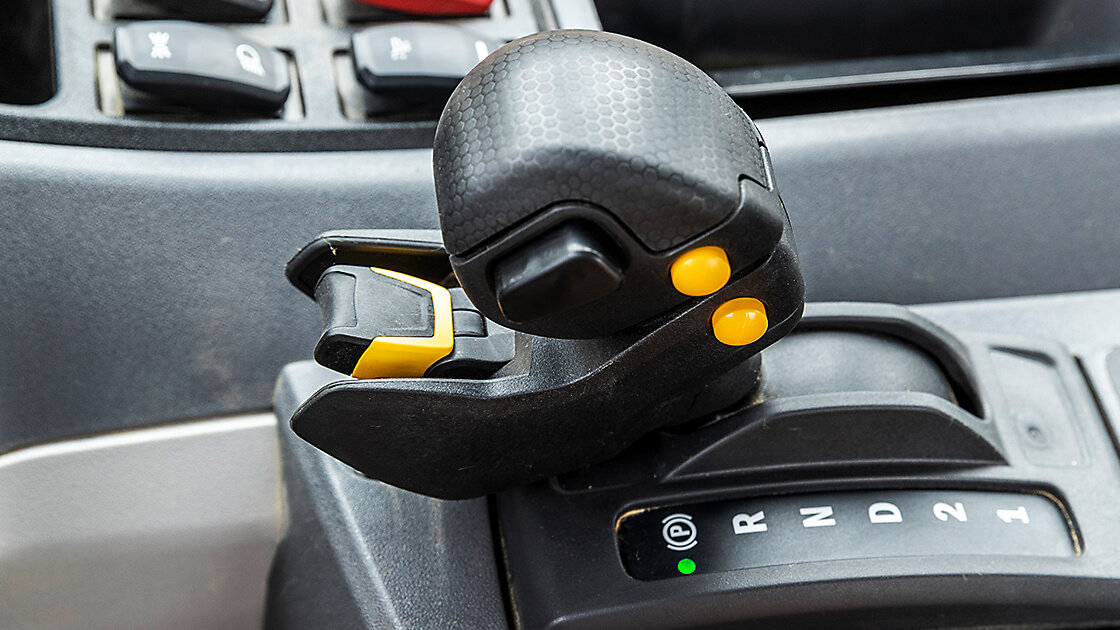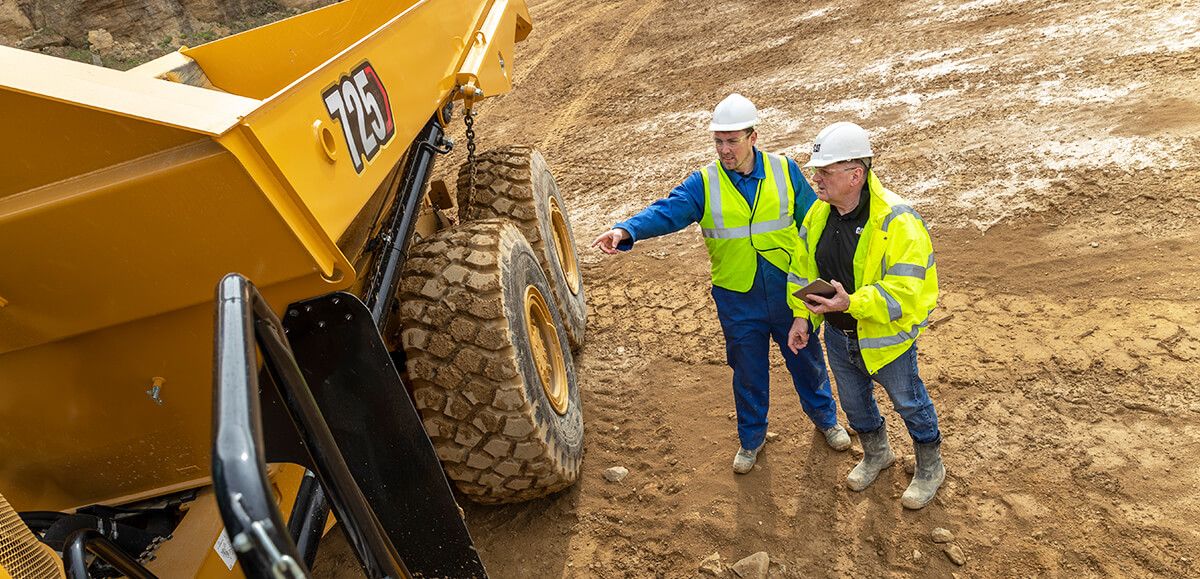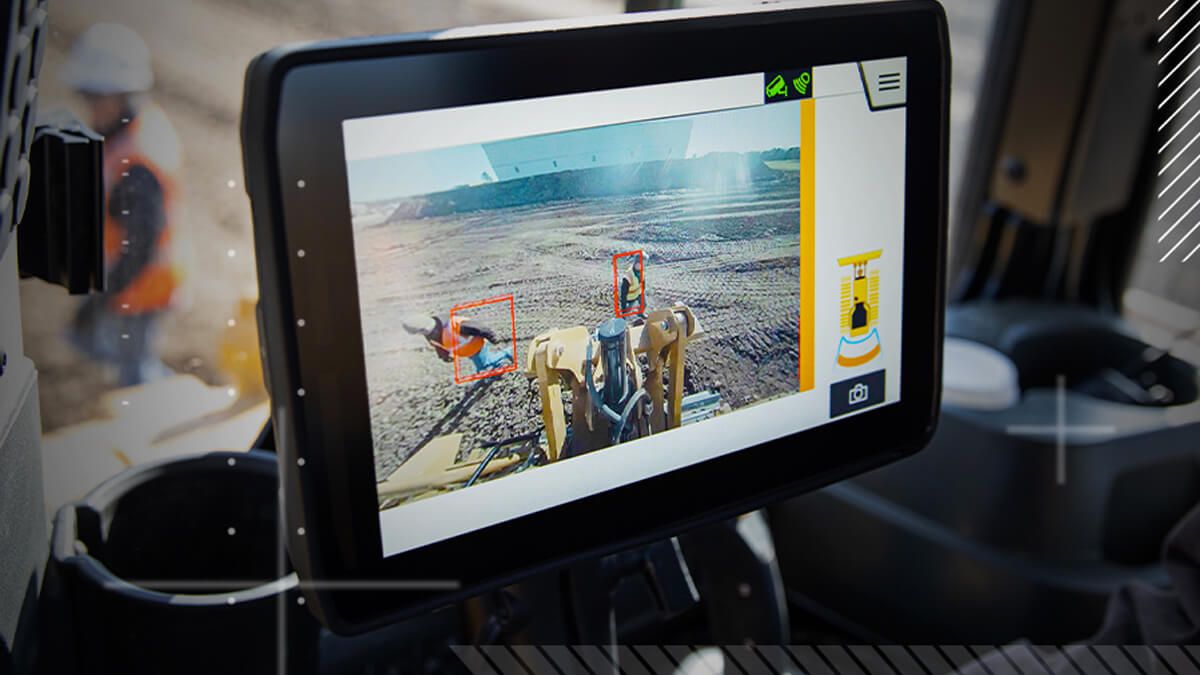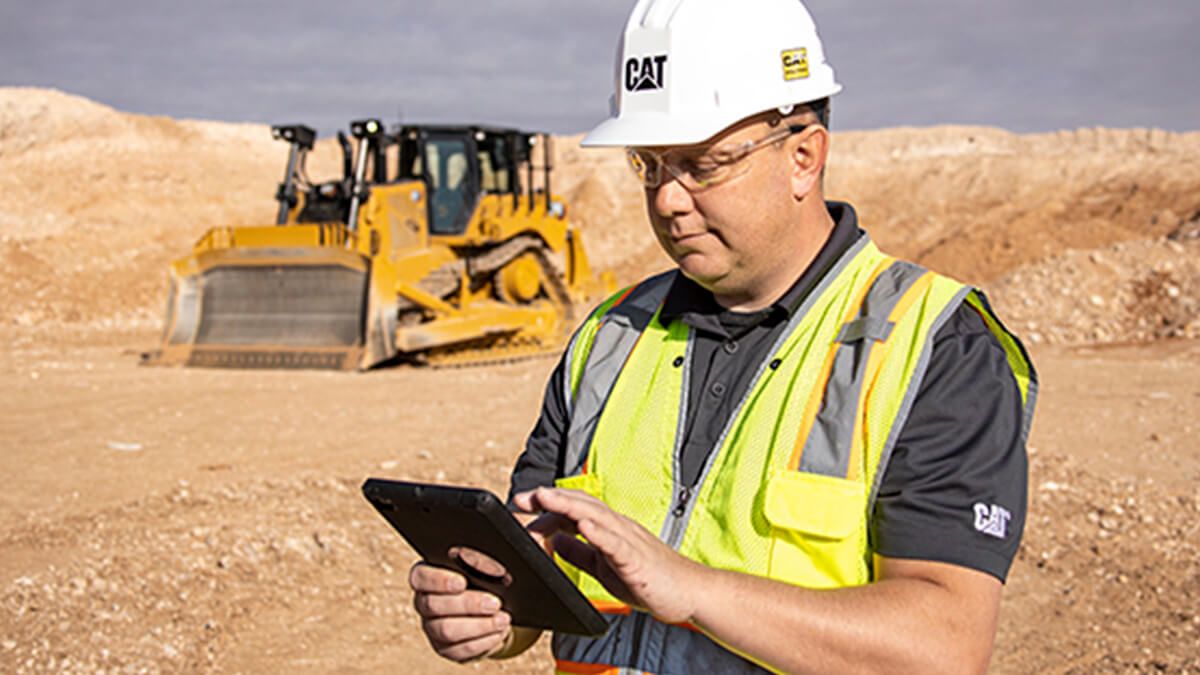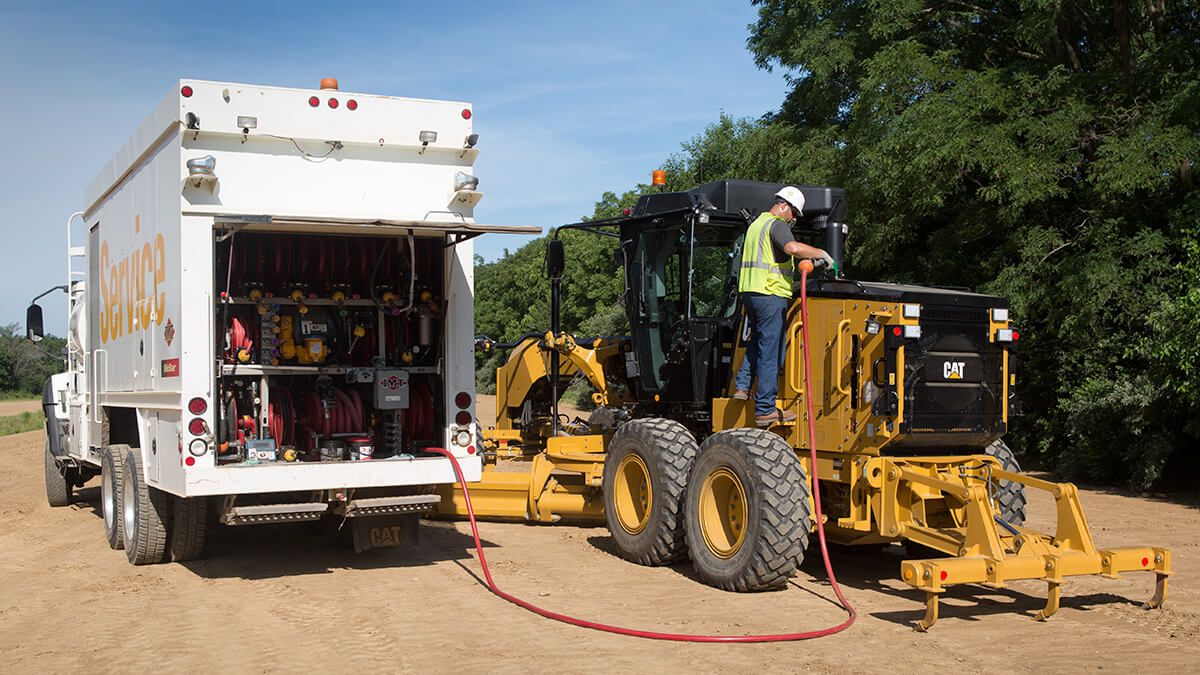

Sign In
Welcome! Sign In to personalize your Cat.com experience
If you already have an existing account with another Cat App, you can use the same account to sign in here
Register Now
One Account. All of Cat.
Your Caterpillar account is the single account you use to log in to select services and applications we offer. Shop for parts and machines online, manage your fleet, go mobile, and more.
Account Information
Site Settings
Security
Understanding Articulated Truck Braking Systems
Articulated trucks are designed to haul heavy loads in uneven and often steep terrain. It takes a special type of brake system to stop them safely. Learn about articulated truck braking systems to boost both safety and efficiency on your jobsites.
Estimated read time: 5 minutes
Articulated truck operators routinely navigate bumps, ruts and mud while hauling heavy loads over steep grades. This means bed rollovers — not to mention loss of control or difficulty stopping — are possible.
One powerful tool when hauling heavy loads is Cat® articulated truck braking systems. Understanding their functions can help you work more efficiently and safely on even the toughest haul roads.
PARKING BRAKE
Just like on your personal car or truck, your articulated truck’s parking brake is used to hold the vehicle in position while stationary. The control is part of the transmission gearshift.

To engage the parking brake, shift to the (P) position.
To disengage, shift out of the (P) position.
The parking brake is applied by a spring and can be disengaged by oil pressure, which builds as the engine runs. The parking brake can be disengaged four times with that oil pressure, even after the engine is shut off. The engine start switch must be in the ON position.
Always engage the parking brake after the machine has stopped.
The parking brake can be used to stop the machine if the service brakes fail to stop the machine — but this should only be done in an emergency.
Do not operate the machine until the service brakes and parking brake are operating correctly.
WAITING BRAKE
The waiting brake is designed to hold the machine stationary while waiting in line to load, or while being loaded.
Never leave the cab while the waiting brake is engaged.
Note that the waiting brake indicator will illuminate when service brake valves are engaged.
To activate the waiting brake:
Stop the machine with engine running.
Move the transmission control to the (N) position.
Press and release the waiting brake button. This will engage the service brake valves, and the waiting brake symbol will illuminate green on the monitoring system.
To disengage the waiting brake:
If you move the transmission control out of the (N) position, the waiting brake will disable.
With the brake pedal applied, press and release the waiting brake button to disable.
If the waiting brake is not able to hold the machine on steep grades, then the park brake will automatically apply. An alarm will activate with a popup on the Cat Production Measurement (CPM) monitor.
Note that the waiting brake is only effective while the engine is running. Once the engine is stopped, the service brake valves disengage and the parking brake automatically applies.
Make sure the parking brake will hold the machine before leaving the cab. Do not leave the cab with the waiting brake applied.
SERVICE BRAKE
The service brake pedal controls the primary braking system on your machine. The service brake pedal is to the left of the accelerator pedal on the cab floor. Use it to stop the machine and avoid engine overspeeding.
In the event of failure within the service brake system, the service brake control provides the secondary brake function on the machine to allow the operator to bring the machine to a stop.
Unlike a passenger car or truck, the service brake on a Cat articulated truck has several operational features to aid in safe and efficient operation:
Use correct gear selection and the retarder to control the speed of the machine on downhill grades.
To avoid an engine overspeed with the retarder engaged, use the service brake to downshift the machine to a lower gear.
Avoid using the service brake to maintain current gear. You'll see a diagnostic popup on your Cat Information Display if you apply the service brake pedal while going downhill. This is based on high axle oil temperature. If you receive the popup notification, reduce machine speed and downshift to a lower gear. The retarder should be used to maintain machine speed downhill.
Note: Repeated engagement of the service brakes on downhill grades may cause excessive wear and overheating of the service brakes.
RETARDER CONTROL
Retarder control is the most distinct braking system on your articulated truck. It uses the engine compression brake as the primary retarder and the transmission retarder as the secondary retarder (if equipped). This means you maintain steady speeds on grades without overusing the service brakes.

The retarder control lever is located to the right side of the steering column. The control lever stalk has four positions:
Off position: When the lever is in position (0), the retarding system is disabled.
Medium position: Move the lever to position (I) to enable four-cylinder engine compression braking and transmission retarding (if equipped).
High position: Move the lever to position (II) to enable six-cylinder engine compression braking and transmission retarding (if equipped).
Automatic position: Move the lever to position (AUTO) to enable the Automatic Retarder Control (ARC) system. The ARC system will modulate the retarding system to maintain a speed set by the operator. This is the recommended setting for optimal gear selection and retarding systems control.
UNDERSTANDING ARC
During flat ground or uphill operation, ARC will activate the engine compression brake based on payload and transmission gear.
Select your desired ARC level through the machine icon on your Cat Information Display. There you can adjust coasting level.
ARC will hold the current machine speed when the operator releases the throttle pedal. It also determines optimum retarding gear according to grade and payload.
To increase hold speed: Slightly apply the throttle. The higher speed holds when you release the throttle. If you press the throttle beyond threshold, however, ARC will deactivate. This threshold is based on grade and payload.
To decrease hold speed: Apply the service brake pedal. A lower speed sets when you release the pedal.
ABOUT THE ENGINE COMPRESSION BRAKE
It allows the operator to slow the machine without the service brakes, reducing brake wear and overheating.
You can use the engine compression brake to regulate the speed of the machine.
However, it is not a substitute for the service brake. The engine compression brake cannot stop the machine and cannot hold the machine stationary.
Learn to use these braking features properly to increase safety in difficult hauling conditions and to increase productivity.
Your Cat dealer is here to support your machine, offering Parts Kits for all your preventive maintenance needs. Download the Cat Inspect app to digitally note your articulated truck’s maintenance history, and know you can always count on your Cat dealer for all your equipment service needs.
Popular Articles About Articulated Trucks
Get the most from your articulated truck with operating tips, safety advice, maintenance help and much more.
-
Improve Jobsite Safety: Cat® Detect with Smart Camera
Boost visibility from your cab with Cat Detect with Smart Camera.
SEE THE DIFFERENCE -
Get Parts and Service Manuals Fast with SIS2GO App
This Cat® parts and service app provides a world of expertise.
SEE MORE -
What is Biodiesel? Fuel of the Future, Fuel of Today?
Biodiesel is everywhere — available now, it is a cleaner, renewable fuel option.
GET BIOFUEL SMART -
Building Trust With Customers in Construction
As a contractor, building trust with customers and maintaining relationships is vital.
EARN CONFIDENCE
Once You Own, You're In
Gain unlimited access to must-know information about your machine. Find ideas you can put to work on the job right away, including business insights.
